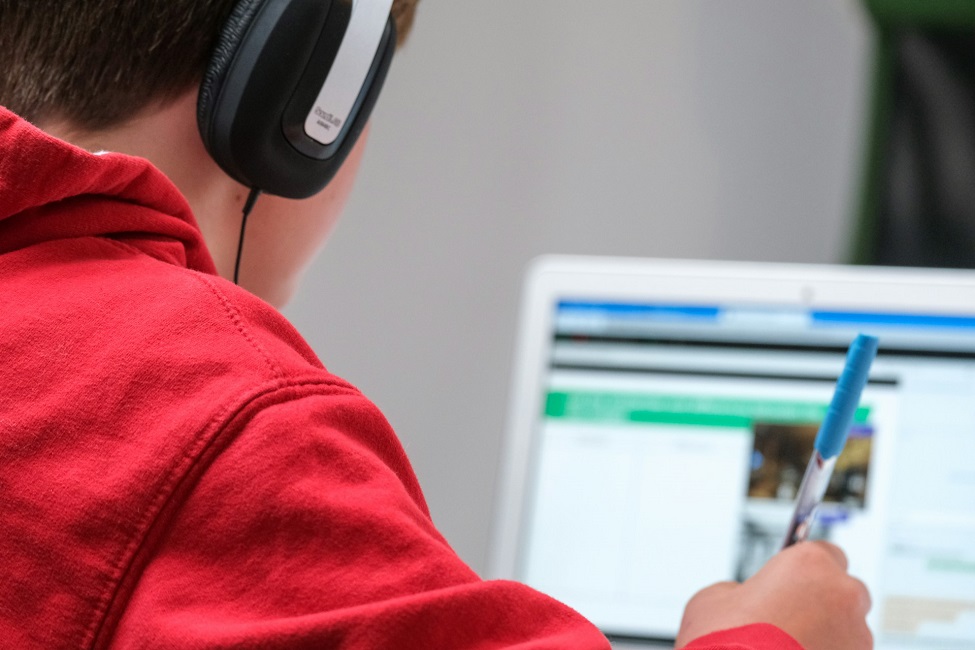Image by Compare Fibre from Unsplash
Imagine a world where students can enter a virtual classroom, interacting with their peers and instructors in real time, regardless of their physical location. With virtual reality, learners can explore historical sites, witness scientific simulations, and engage in hands-on experiments, all from their homes. This level of interactivity and authenticity has the power to revolutionize online learning, making it more engaging and impactful than ever before.
The advent of online learning, accelerated by the global pandemic, has fundamentally changed how we perceive and approach education. This shift in perspective has opened a world of possibilities for students, allowing them to access high-quality education regardless of geographical constraints or time limitations.
Online learning is no longer an alternative but an integral part of the education ecosystem. It is expected to coexist with traditional classroom-based learning, offering flexible and hybrid models that cater to diverse learner needs. This shift towards remote education represents a temporary adjustment and a revolution in learning methodologies, potentially redefining education for future generations.
The Rise of Remote Education
The concept of remote education is not a new one. Distance learning, in various forms, has been around for decades, evolving from correspondence courses to online degrees. However, the COVID-19 pandemic acted as a catalyst. It forced educational institutions worldwide to adopt online learning as the primary mode of instruction.
This transition, initially a necessity, has unveiled the vast potential of online learning. Educators have found it a viable and, in some cases, a preferable alternative to traditional classroom learning.
Benefits of Online Learning
Online education has made quality education accessible to more people, breaking down barriers and limitations of traditional classroom learning. Let’s explore its key benefits.
- Accessibility and flexibility: Online education breaks down geographical barriers, enabling students from remote or underserved regions to access quality education. It offers the flexibility to learn at your preferred pace, making it ideal for those balancing education with work or family commitments.
- Customized learning experiences: Digital platforms facilitate personalized education, allowing students to learn in their preferred way. Interactive tools, adaptive learning technologies, and a wealth of online resources make learning more engaging and effective.
- Cost-effectiveness: Remote education often proves more economical than traditional classroom learning. It eliminates the costs associated with physical infrastructure and commuting, making education more affordable for a wider demographic. You can use the money you save to open a savings account or invest in your future.
Challenges of Remote Education
While it has many benefits, such as flexibility and accessibility, online learning also presents several challenges. Here are some of them.
- Digital divide: The gap in technology access and reliable internet connectivity can widen the educational divide. Students in low-income or rural areas may need help participating in online learning, exacerbating existing inequalities.
- Engagement and motivation: The absence of a physical classroom environment can impact student engagement and motivation. Having no face-to-face interaction with peers and instructors may result in feelings of isolation.
- Quality of education: Ensuring the quality of education in an online setting is a significant challenge. The effectiveness of remote teaching varies significantly across institutions and educators, with some needing help to adjust their teaching methods to an online format.
Impact on the Education Landscape
Flexibility is a significant benefit of online learning. Much like remote work, it allows people to move at their own pace and from anywhere in the world. Students can access educational resources anytime and not be restricted to traditional classroom settings. That makes any education more accessible and convenient for everyone. In addition, distance education allows students to obtain degrees and acquire new abilities that they might not have had access to otherwise.
While it is not a new concept, the COVID-19 pandemic certainly accelerated the adoption of online learning. Many institutions are now considering integrating remote learning into their curriculum.
The most glaring effect of online learning on the educational landscape is the shift from a teacher-centered to a student-centered approach. With remote learning, students have more control, and teachers play a supportive role in facilitating and guiding their learning.
Additionally, remote learning fosters collaboration and communication among students. It promotes the development of valuable skills like critical thinking, problem-solving, and teamwork.
Another impact of remote learning on education is technology use. While schools have been gradually adopting hardware and software into the system, the last few years have accelerated the pace.
Technology is integral to remote learning, but conventional classrooms are also getting on board. For instance, many teachers use augmented and virtual reality to make learning more engaging in both virtual and face-to-face classes.
Online Learning Is Here To Stay
The revolution of online learning is redefining the educational landscape, presenting new opportunities and challenges. While it cannot entirely replace the traditional classroom, it complements and enhances it, offering a more accessible, flexible, and personalized learning experience.
As we embrace this change, it is imperative to address the challenges and ensure that the benefits of online learning are accessible to all. The future of education is not about choosing between online or in-person learning. It’s about integrating the best of both to create a more inclusive, effective, and dynamic educational ecosystem.
